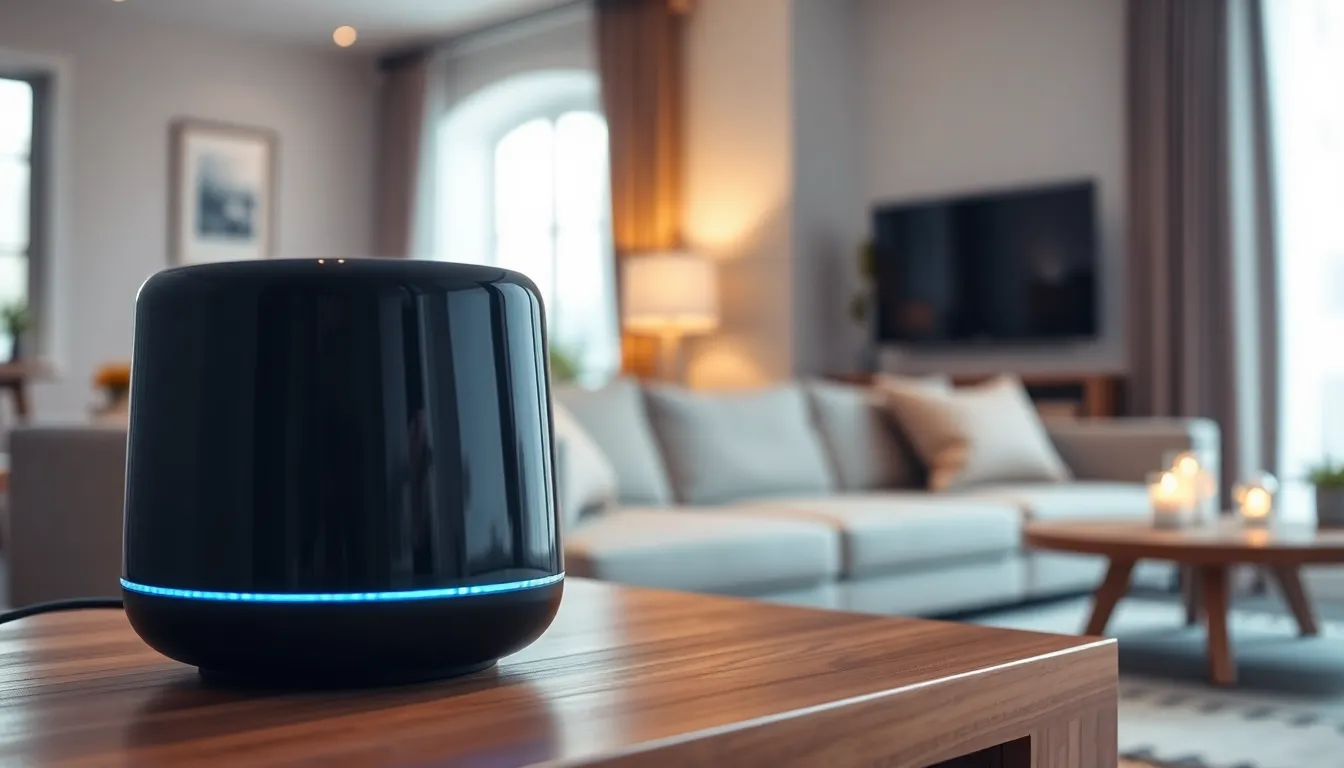Table of Contents
ToggleIn the bustling world of the Internet of Things, where devices chatter away like caffeinated squirrels, CoAP (Constrained Application Protocol) steps in as the suave diplomat. Designed for low-power and lossy networks, it’s the unsung hero that helps smart devices communicate efficiently without breaking a sweat—or the bank.
Overview of CoAP
CoAP (Constrained Application Protocol) serves as a vital communication framework within the IoT domain. It simplifies interactions among resource-constrained devices in challenging network environments.
What Is CoAP?
CoAP is a specialized internet application protocol designed for simple electronic devices. This protocol provides reliable communication for devices that face constraints in power and processing capabilities. It operates both in unicast and multicast modes, catering to various IoT applications. As a RESTful protocol, CoAP uses methods like GET, POST, PUT, and DELETE to facilitate interactions. Its lightweight nature makes it particularly suitable for scenarios involving limited bandwidth.
Key Features of CoAP
CoAP boasts several features that enhance its usability in IoT environments. Its low overhead ensures efficient data transmission, particularly in low-power networks. The protocol supports asynchronous messages and acknowledges reliable delivery through a confirmable message option. Security is a priority; CoAP employs DTLS for secure communication. Furthermore, it seamlessly integrates with existing web technologies, thanks to its capabilities for interacting with HTTP systems. CoAP also utilizes a simple query/response model, which enhances device interoperability within complex networks.
Technical Aspects of CoAP
CoAP’s technical foundation greatly contributes to its effectiveness in IoT applications. It stands out due to its well-defined structure and efficient messaging capabilities.
CoAP Protocol Structure
CoAP employs a simple yet effective protocol structure. Each CoAP message consists of a fixed header, optional headers, and a payload. The fixed header contains essential information such as version, type, and token length. Optional headers provide additional context, enabling diverse functionalities. The protocol supports two message types, confirmable and non-confirmable, tailoring communication to specific needs. It also categorizes messages as request or response, enhancing clarity in device interactions. Protocols supporting RESTful architecture effortlessly integrate with CoAP, fostering compatibility with existing web technologies.
Message Formats in CoAP
CoAP uses a lightweight message format tailored for constrained environments. Its message structure comprises a header, options, and a payload, maintaining low overhead for all transmissions. The header consists of 4 bytes, ensuring essential data is always transmitted efficiently. Options indicate various metadata attributes, allowing devices to handle messages contextually. Payloads carry the actual data exchanged between devices. Each option may vary in length, accommodating diverse requirements. CoAP supports several encoding formats, including JSON and CBOR, enhancing flexibility and interoperability.
Use Cases of CoAP
CoAP plays a significant role across various applications, particularly within the IoT ecosystem. Its lightweight nature and efficient communication model make it suitable for many environments.
IoT Applications
IoT applications benefit immensely from CoAP’s attributes. In industrial settings, sensors and actuators utilize CoAP for real-time data exchanges, enhancing monitoring and control processes. Agriculture implements CoAP for precision farming, allowing remote access to environmental data. Smart cities rely on CoAP to facilitate communication among devices like streetlights and waste management systems, improving resource management. Transportation systems also use CoAP to optimize vehicle communication, enabling seamless data transfer for safety and efficiency. Collectively, these applications illustrate CoAP’s versatility in creating interconnected smart environments.
Smart Home Solutions
Smart home solutions embrace CoAP for effective device communication. Appliances such as thermostats and lighting controls leverage CoAP to respond quickly to user commands. Home security systems utilize CoAP for real-time alerts and monitoring, ensuring residents remain informed. Energy management devices incorporate CoAP to optimize energy consumption, contributing to sustainability. Integration with voice assistants benefits from CoAP’s simple interface, making interactions more intuitive for users. Overall, CoAP enhances the functionality and convenience of smart home environments, streamlining interactions among connected devices.
Advantages and Disadvantages of CoAP
CoAP presents a range of benefits and limitations within the IoT landscape, influencing its adoption across various applications.
Benefits of Using CoAP
CoAP’s lightweight nature greatly reduces overhead, making it ideal for constrained devices and networks. Efficient communication occurs through its RESTful architecture, employing familiar methods like GET and POST. Asynchronous messaging support enhances responsiveness, allowing devices to communicate without blocking. Integration with existing web protocols facilitates ease of use for developers. Furthermore, DTLS support ensures secure data transmission, addressing security concerns in IoT environments. This framework’s flexibility adapts to diverse encoding formats like JSON and CBOR, promoting interoperability among different devices, ultimately simplifying device interactions.
Limitations of CoAP
CoAP does face several constraints that can impact performance. Limited reliability in message delivery can occur due to its non-confirmable message type, which may result in data loss. Though support for multicast improves efficiency, it can complicate message routing in larger networks. Network conditions like high latency or significant packet loss may hinder effective communication, especially in challenging environments. CoAP’s simplified features might restrict more advanced functionalities that other protocols provide. Compatibility with certain legacy systems can also pose challenges, depending on specific use cases. These limitations can affect decision-making when choosing a communication protocol for IoT applications.
Future of CoAP
CoAP’s future involves significant advancements and integrations, shaping the landscape of IoT communication.
Evolution of CoAP Standards
CoAP standards continue to evolve, emphasizing improvements in performance and security. The Internet Engineering Task Force actively updates specifications to address emerging challenges and requirements. Ongoing developments include enhancements to the standard library and improvements to routing mechanisms. Current trends focus on optimizing the protocol for heterogeneous IoT environments, ensuring compatibility with various device types and network topologies. Adoption of newer versions promises increased scalability and improved error handling, thus positioning CoAP for broader applicability in smart environments.
Integration with Other Protocols
Integration with other communication protocols enhances CoAP’s capabilities in IoT. CoAP operates seamlessly alongside MQTT and HTTP, providing developers with versatile solutions. This interoperability facilitates hybrid systems that leverage the strengths of each protocol. For instance, coupling CoAP with MQTT can address scenarios requiring low latency and reliable transmission. Advanced use cases emerge when integrating CoAP with web technologies, allowing straightforward interactions with web services. Such integrations improve user experiences while maintaining efficient performance across diverse applications.
Conclusion
CoAP stands as a pivotal player in the IoT communication landscape. Its lightweight design and RESTful architecture make it an efficient choice for resource-constrained devices. By addressing the unique challenges of low-power and lossy networks, CoAP enhances connectivity among smart devices.
As it continues to evolve, the integration with other protocols and ongoing updates promise to bolster its functionality and security. CoAP’s adaptability in various applications—from smart homes to industrial settings—demonstrates its potential to drive innovation in interconnected environments. Embracing CoAP can lead to more efficient and responsive IoT solutions, paving the way for a smarter future.





